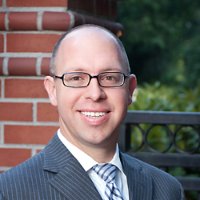Investing can seem like a baffling and costly process to those who don’t partake, even as new technologies are easing the cost barriers of entry into that world.
Automated investing platforms from companies like Charles Schwab, Vanguard and Wealthfront have opened up the market for people with as little as $5,000 or even less, but there’s still something to be said for having a human expert around to consult with. And that’s the spur behind the July launch of Sustainable Wealth Management’s suite of automated investing tools.

“These platforms started coming out three to four years ago,” said Sustainable Wealth Management CEO Todd Pisarczyk. “The first couple firms that started these things were really small startups put together by tech people, not financial advisers. After that, some of the big financial firms started to take notice.”
As larger firms like Schwab started launching their own platforms, more new investors began to enter the market. Millennials especially seem to like the app-based online products where they make all the decisions themselves, Pisarczyk said.
“Who likes this stuff? Mostly younger people,” he said. “It’s got a cool app. They want minimal personal interaction. They want to be able to check the app.”
The automated process is also fairly simple to go through, if a bit robotic, Pisarczyk said.
“You go onto their website, answer a bunch of questions about your financial situation, some risk tolerance questions, and then these computer programs spit out an allocation for your investment portfolio,” he explained.
But what Pisarczyk found from his customers is that they wanted the convenience of automated investing, but they also wanted some actual human experts involved in the mix. So, Sustainable Wealth Management created its own platform within the Schwab system to serve them.
“What we have is kind of an in-between version,” Pisarczyk said. “We work with Charles Schwab. Clients that work with us, we provide the investment advice, but Schwab is the custodian.”
That means Pisarczyk and his firm manage client’s investments within the Schwab system, and clients, if they have questions, can call Sustainable Wealth Management to talk to a human – or they can just go on the app or platform to see how their portfolio is doing.
“The best thing is our customers get to call somebody,” Pisarczyk said. “We have advisers that work with all of this.”
Sustainable Wealth Management was founded in 2004. The Vancouver investment advice firm has four employees. And since its founding, it has grown from $20 million to about $180 million in assets.
“The part of our service that’s really important isn’t our technology, it’s our financial coaching,” Pisarczyk noted. “The technology isn’t tied to that. The important part of what we do is planning.”
Pisarczyk grew up in Vancouver and graduated from Prairie High School. He went to Western University in Bellingham for most of his college degree, but he finished school at Washington State University Vancouver, where he graduated with a degree in business and business administration.
Pisarczyk started working at a brokerage firm for the first time in 1999, but after a few years of frustration with the system, he broke off to start his own company in 2004, incorporating Sustainable Wealth Management in 2005.
“Being at a brokerage firm (before starting my own business), you realize after a while that they’re forcing you to do certain things and sell certain products,” he said.
Many brokerage firms are commission based, so if a broker buys stocks for a client, they get a commission on each transaction. And if the stocks aren’t doing well, and you want to change things, you end up with big fees, he said.
“The client wonders ‘is this in my best interest or are you doing this to get a fee?’” Pisarczyk said. “We charge our clients a (yearly) management fee – on average that might be three quarters of a percent. We don’t get any commissions or other compensations, so there’s no conflict of interest.”
The yearly fee is paid quarterly based on the value of the portfolio.
“The biggest thing is we don’t get paid more if we buy and sell a bunch of stuff in their account,” he said.
That dovetails into a big change in Department of Labor fiduciary rules set to take place in July 2019. The change, which the Trump administration has delayed twice in an effort to stop, would turn all investment advisers into fiduciaries, Pisarczyk said.
“It basically says that anybody receiving compensation for giving somebody investment advice, you’re legally required to act as a fiduciary, meaning they have to act in the clients best interest,” he said.
And that means many more big brokerage firms will likely have to start looking at their fee structures and whether they truly benefit their clients.
“These big firms are still working on a commission basis,” Pisarczyk said. “But the question is can you work in your client’s best interest like that?”
The law doesn’t actually require the firms to get rid of their commission structures, but it does require them to do what’s in the client’s best interests.
“The reason we left that world is so we could work with our clients as a fiduciary,” Pisarczyk said. “Back then you weren’t allowed to do that as a brokerage firm.”
You could consider the new automatic investment platform as a sort of training wheels account for new investors that want to eventually manage bigger assets with the firm, he said.
“It’s not good for a client with $1 million,” Pisarczyk said. “But it’s great for somebody getting started without huge amounts of assets though. It’s a lower cost solution.”
It’s not all that great for people who want to do a lot of customization, though. For instance, if you wanted to build a portfolio with only Pacific Northwest companies like Nike, Microsoft and Boeing, you’d likely want to go with the firm’s more traditional investment services.
“We do a lot of investment for people who only want to invest in green companies, that sort of thing,” Pisarczyk said.
Still, over the half-year or so, a lot of new customers have signed up for the automated system.
“It’s going really well,” he said. “I’d say we’ve got clients at this point with hundreds of thousands of dollars on the platform, and we expect that will keep growing.”









